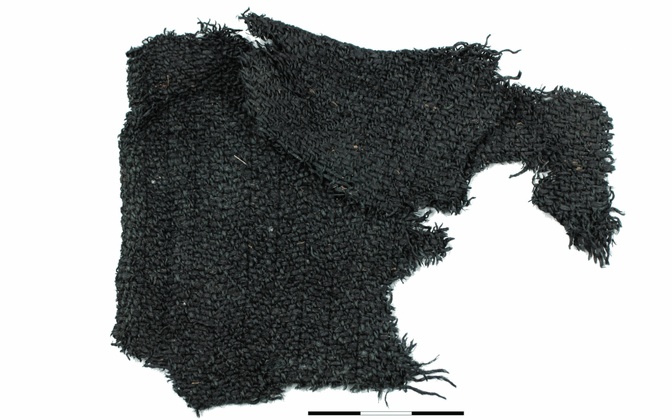The rich tapestry of Estonia's cultural heritage continues to reveal fascinating insights into its ancient history. Recent archaeological discoveries, led by Riina Rammo, an associate professor of archaeology at the University of Tartu, shed light on the vibrant textile traditions of early medieval Estonia. Among the remarkable findings is the revelation that "blackish-blue" was the favored color of this bygone era. This captivating discovery not only offers a glimpse into the fashion preferences of ancient Estonians but also unveils the complex artistry involved in achieving this coveted hue.
The Prevalence of 'Blackish-Blue'
The majority of textile artifacts unearthed from early medieval Estonia come from women's burial sites. These garments, adorned with metal ornaments, have allowed researchers to uncover the color preferences of the period. According to Rammo, "blackish-blue" was undeniably the dominant and fashionable color from the 11th to the 15th century, particularly for festive occasions among women.
Woad blue was the most enduring textile color of the period
To achieve this enigmatic shade, Estonians of the time used a combination of imported compounds and native plants. While blue was the primary hue derived from imported indigotin-based dyestuff, a dark-purple tone was achieved by adding locally sourced plants. This unique blend of imported and native ingredients set Estonia's textile traditions apart from the rest of Europe.
The Role of Woad in Estonian Dyeing
Woad, scientifically known as Isatis tinctoria, played a pivotal role in early medieval Estonian dyeing practices. This biennial plant, characterized by its yellow flowers, was not native to the region but was introduced, possibly as a weed, during the Middle Ages. It was cultivated and processed into pellets, forming the foundation for dye solutions. Merchants depicted in medieval artwork were often seen carrying bags of woad balls, indicative of its significance in trade.
Dark blue fabric fragment from Pudivere deposit find
While woad was the primary source of blue dye in Estonia, researchers have now discovered that other dyes were blended with woad to create the desired "blackish-blue" shade. This intriguing revelation opens up possibilities for exploring the unique combinations of dyes used in Estonian textiles during this era.
A Quest for the Darkest Shade
The enduring popularity of "blackish-blue" may be attributed to its remarkable resistance to fading and washing. It was a testament to the quality and longevity of this dye. Moreover, the importation of indigotin-based dyestuff from distant lands likely added prestige to the color, making it even more desirable for the wearer.
Since ancient times, woad (Isatis tincotria) was an important source of blue dye and was cultivated throughout Europe
Modern Applications and Sustainability
The findings from this ongoing research have broader implications. They are part of the EU-supported international project "Colour4CRAFTS," which aims to develop sustainable dyeing technologies. By exploring ancient dye sources and techniques, researchers hope to create modern, eco-friendly dyeing methods that consume less water, contributing to sustainability efforts.
The textile traditions of early medieval Estonia provide a unique foundation for this research. Lichens and tree bark, commonly used in this region, have inspired modern textile chemists looking for water-efficient dye sources. The comparison of ancient recipes with contemporary samples promises to yield valuable insights into Estonia's historical dyeing practices.
The yarn is dyed with woad dye
Conclusion
Estonia's early medieval fascination with "blackish-blue" textiles is a testament to the rich and diverse cultural heritage of the region. Riina Rammo's research, in collaboration with Finnish colleagues, offers a unique window into the past, revealing not only the popularity of this enigmatic color but also the intricate art of dyeing that was practiced in Estonia during that time. As the research continues, it holds the promise of uncovering more secrets of the past and contributing to modern sustainable dyeing practices, keeping Estonia's textile traditions alive in a new era.











